A cutting-edge advancement in surveillance technology, the Embraer 145I Airborne Early Warning System For IAF revolutionizes its capabilities for strategic intelligence and defence. This plane, created by Embraer, a Brazilian aerospace company, is designed exclusively for the Indian Air Force.
It is based on the Embraer ERJ 145 Regional Jet and equipped with a radar system and other electronics, enabling it to perform early warning and command and control operations, also known as AEW&C.
The system’s main functions include providing real-time situational awareness to ground-based stations and flying fighter aircraft, as well as detecting and tracking aircraft, missiles, and other aerial targets at great distances.
Embraer 145I Airborne Early Warning System For IAF _ has been in service with the Indian Air Force since 2012 and has been used in a variety of roles, including air defence, maritime surveillance, and border security. Since then it has been used extensively in various operations and exercises.
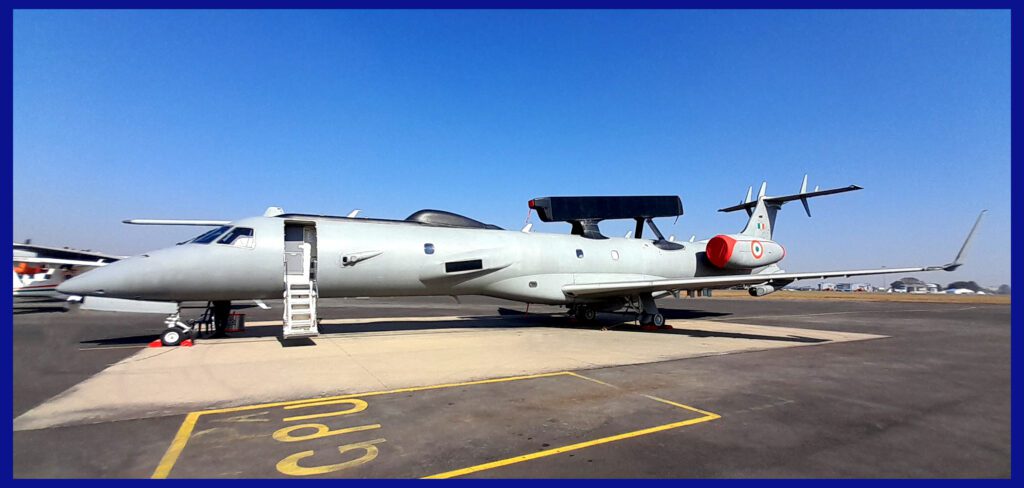
One of its most notable deployments was during the 2019 Balakot airstrike, where it provided crucial support to the Indian Air Force’s Mirage 2000 fighter jets in conducting the airstrikes on terrorist training camps in Pakistan.
In addition to its primary role in the Indian Air Force, the Embraer AEW&C has found versatile applications in various other fields. This aircraft has been utilized effectively for maritime surveillance operations, border security, and disaster relief missions. A notable example of its humanitarian use occurred in 2014 when it played a crucial role during the Hudhud cyclone that struck the east coast of India. The Embraer AEW&C facilitated real-time situational awareness, significantly aiding in search and rescue operations and disaster relief efforts. Its adaptability and capabilities have made it a valuable asset in addressing a wide range of critical situations beyond its strategic intelligence and defence functions.
In addition to its use by the Indian Air Force, the Embraer AEW&C has been sold to other countries, including Mexico and Saudi Arabia. The system has proven to be a reliable and effective platform for early warning and command and control and is likely to remain in service with various air forces around the world for many years to come.

The Development Of The AWACS aircraft
The inception of the Embraer AEW&C traces back to the early 2000s when the Indian Air Force initiated the development process by issuing a request for proposal (RFP) for a modern airborne early warning and control system. After a thorough evaluation, Embraer, in collaboration with Israel Aerospace Industries (IAI), secured the contract in 2008 to spearhead the creation of the system, utilizing the Embraer ERJ 145 regional jet as its foundational platform. This partnership between Embraer and IAI proved instrumental in bringing the project to fruition and delivering an advanced airborne surveillance and control capability to the Indian Air Force.
The aircraft boasts cutting-edge features, notably an advanced Active Electronically Scanned Array (AESA) radar system. This radar system offers an impressive 240-degree coverage, extending its range to over 250+ kilometres. One of its remarkable capabilities lies in its capacity to simultaneously track multiple targets, providing real-time situational awareness to friendly forces. This state-of-the-art AESA radar equips the aircraft with enhanced surveillance and intelligence-gathering capabilities, making it a pivotal asset in strategic operations and defence.
Other systems on board the Embraer AEW&C include electronic warfare equipment, a mission management system, and a communication suite. The aircraft can accommodate up to 8 – 10 operators, who can monitor and control the various systems from their workstations.
The Indian Air Force possesses three aircraft equipped with radar, utilized for surveillance as part of the DRDO AEW&C program. The selected aircraft model for this initiative is the Embraer ERJ 145, and the total cost of the purchase, which includes aircraft upgrades, amounts to $300 million. The initial plan was to deploy these aircraft by 2013.
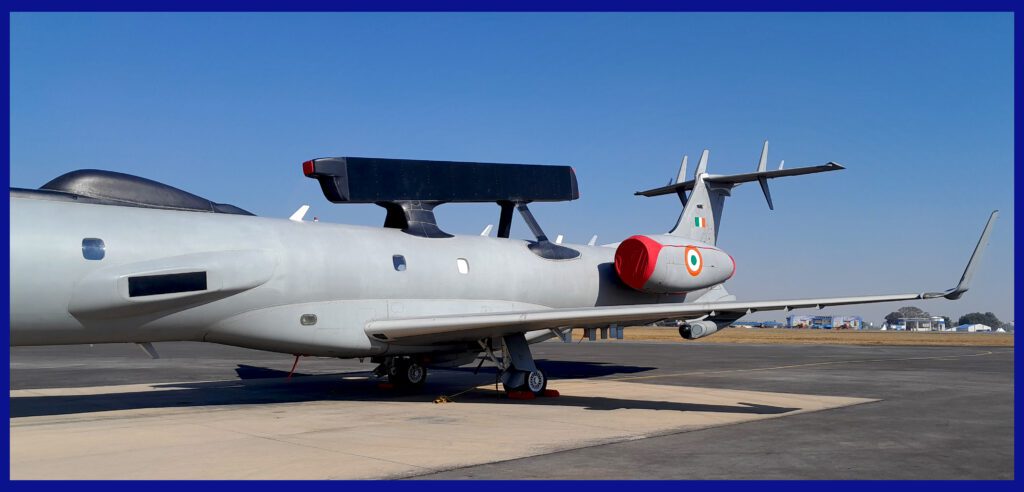
The AEW&C project aimed to supplement the EL/W-2090 AWACS that the IAF had purchased from Israel, which was more potent and substantial. There have been three orders for EL/W-2090 systems, and three more follow-up orders are scheduled in 2010. The DRDO AEW&C project aimed to improve the domestic capability for creating and running airborne surveillance platforms, in addition to providing the IAF with a more adaptable and economical AEW&C platform as a backup to its more potent EL/W-2090 class systems.
The first Embraer AEW&C aircraft was delivered to the Indian Air Force in 2012, and subsequent aircraft were delivered over the next few years. The system has undergone several upgrades and modifications since then, including the integration of a new AESA radar system with a longer range and enhanced capabilities.
Overall, the development of the Embraer AEW&C was a collaborative effort between Embraer, IAI, and various Indian defence organizations, and resulted in the creation of a highly capable airborne early warning and control platform.
The Design Of The AEW&C System
The creation of an AEW&C (Airborne Early Warning and Control system) entails the seamless integration of a robust radar system with a command and control centre on an airborne platform, typically an aircraft. The radar system is meticulously engineered to detect and track numerous targets across significant distances, offering precise details about their position, speed, and direction of movement. The valuable information collected is then transmitted to the command and control centre, where skilled operators process and analyze it to make informed decisions and take appropriate actions. This collaborative setup enables real-time surveillance and strategic control, making AEW&C systems indispensable assets in enhancing situational awareness and bolstering defence capabilities.
The AEW&C system is also equipped with advanced communication and data-sharing capabilities, which allow it to exchange information with other airborne and ground-based systems in real-time. This helps to create a comprehensive and coordinated air defence network, enabling military commanders to make informed decisions quickly and effectively.
An active antenna array unit ( AAAU ), similar to Erieye, will give 240° coverage by mounting two radiating planar arrays back-to-back on top of the fuselage. The 10 2 antenna array panels, 160 transmit receive 10 2 antenna array panels, 160 transmit receive multi-modules ( TRMMs ) dividers, beam forming units, beam control units, power supply units, and related electrical components like cables and connectors are all housed in a compact manner in the AAAU.
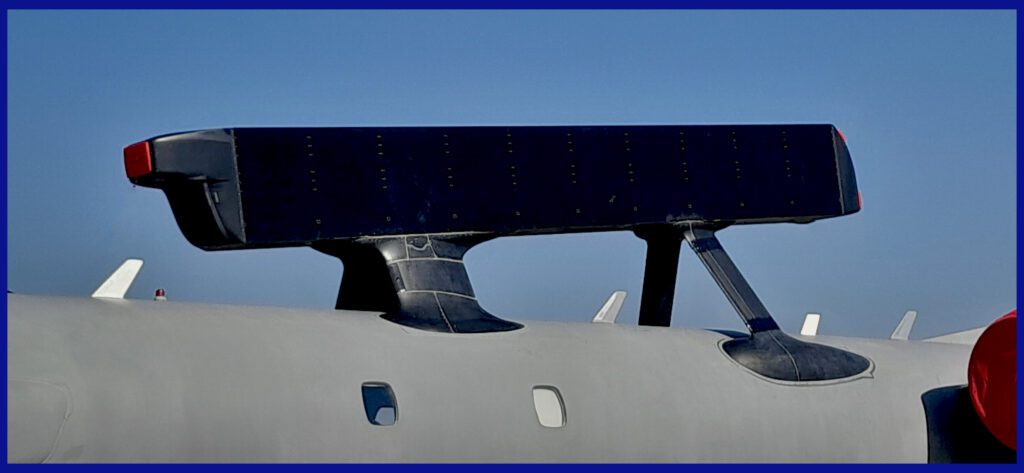
Getting to the AAAU with minimal dimensions and ideal mass characteristics was accomplished through an inventive and iterative method. Eight trans-receive modules are compactly coupled to make a single TRMM in this Indian TRMM design, making it possible to deploy 160 of them in the AAAU at high density to power the surveillance radar.
The aircraft also has additional mission capabilities, including IFF ( identify friend or foe ), electronic and communication support measures, C-band line-of-sight and Ku-band SATCOM datalinks, etc., that are comparable to those on the AWACS and CAEW systems.
The primary radar system’s surface surveillance and air surveillance modes of operation are crucial. The sensor is capable of searching, tracking while scanning, prioritizing, high-performance tracking, etc. Even if the targets under priority tracking cross the primary surveillance region, they will still be in full track mode. To increase the tracking accuracy in high-performance tracking, more measurements will be taken.
The radar offers a fast-beam agile system that can function in multiple modes simultaneously thanks to active aperture technology. The use of speech and data channels on data links ensures interoperability with AWACS, other AEW&C aircraft, fighters, and ground-exploitation stations. There are five operator workstations in the aircraft cabin, which is more than enough to handle the operational mission tasks.
The integration of an air-to-air refuelling system plays a vital role in extending the operational capabilities of aircraft when required. With this system in place, the platform aircraft’s endurance can be significantly enhanced, allowing it to operate for approximately nine hours with just one air-to-air refuelling session. This feature proves to be immensely valuable during extended missions or critical situations, as it ensures sustained and prolonged operational efficiency, providing a considerable advantage to the aircraft and its mission objectives.
Hence, the design of an AEW&C system must also take into account factors such as aerodynamics, power supply, and data processing capabilities. It requires a robust and reliable platform that can operate in a variety of conditions and perform its functions with a high degree of accuracy and reliability.
Overall, the design of an AEW&C system is a complex and challenging process that involves integrating multiple technologies and components into a cohesive and effective airborne platform. The end result is a powerful and versatile system that plays a critical role in modern military operations.

Capabilities Of The DRDO made AEW&C System
The DRDO ( Defense Research and Development Organization ) AEW&C system is a powerful and versatile airborne surveillance platform that provides a range of capabilities for the Indian Air Force.
The primary radar of the AEWACS aircraft will be an active electronically scanned array ( AESA ) with IFF (Identification Friend or Foe). Additionally, the system will be able to use CSM ( Communications Support Measures ) and ESM ( Electronic Support Measures ). Satellite communication systems, datalinks to connect the AEW&CS to fighters, and ground-based control systems will all be offered. The aircraft will also be equipped with a complete self-defence system. The mission computers will operate a data handling system that will connect the avionics suite.
Here are some of the key capabilities of the DRDO-made AEW&C system
- The radar, which consists of two back-to-back AESA arrays and an additional dedicated IFF array, will include an extended range mode for use against fighter aircraft.
- With a directional accuracy of 2 degrees RMS and a frequency accuracy of 1 MHz, the ESM system will be able to track sources.
- The ESM system will have full 360° azimuth coverage and a database of up to 3000 emitters against which threats will be scanned.
- The communication Support Measure system will analyse and record intercepted communications both in flight and post-flight.
- The passive Missile Approach Warning System, the Radar Warning Receiver, and the countermeasures dispensers are all included in the Self Protection Suite. The ESM and CSM suites will incorporate the SPS.
- The aircraft will support Inflight refuelling.
- The aircraft will have SATCOM, and datalinks to pass on ESM, CSM and radar data to ground stations and datalinks to pass on target information to fighters. More than 40 other aircraft will be data linked together by the AEW&C aircraft
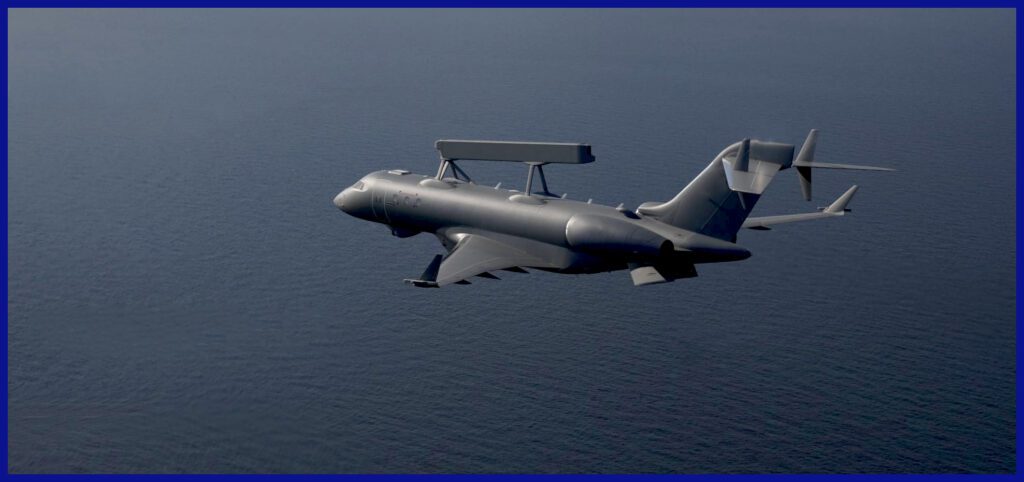
Operational History As Of April 2023, DRDO, made the AEW&C System
The first operational deployment of the system took place at night, on February 26, 2019, Balakot airstrike, in which the Indian Air Force carried out a targeted strike against terrorist camps in Pakistan.
During the mission, the AEW&C system played a critical role in providing real-time intelligence, surveillance, and reconnaissance support to the Indian Air Force. It detected and tracked multiple targets in the area, providing accurate information about their location, speed, and direction of movement. This information was relayed to the command and control centre, where it was analysed by trained operators, enabling them to make informed decisions quickly and effectively.
Since then, the DRDO AEW&C system has been involved in multiple operational deployments, including during the ongoing border standoff with China. It has played a critical role in enhancing the Indian Air Force’s situational awareness and operational capabilities, enabling it to respond quickly and effectively to potential threats.
The AEW&C System’s Potential Future Development
The Centre for Air Borne Systems ( CABS ) in Bengaluru and the DRDO are working together on a new project to create bigger and more powerful AWACS planes. The plan was to build two of these planes initially, with four more to follow. The project received official approval in January 2013, and in March 2015 it was decided to use two Airbus A330s. Later on, in February 2017, the decision was made to purchase six planes in total, which can also be used for aerial refuelling.
In April 2019, the DRDO suggested an improved Netra AEW&CS to the IAF. They wanted to use the EADS CASA C-295 because it already had a stationary radar dome setup. DRDO suggested using the C-295 as a common platform between the current planar array radar, which only covers 240 degrees, and the new 360-degree radar dome they were developing. This would save time and money. However, later on, the DRDO decided to replace the C-295 with the Airbus A-330, which would serve both as an AWACS and an aerial refuelling tanker.
In September 2021, the Indian government’s Cabinet Committee on Security (CCS) approved an ambitious ₹11,000 crore project. The objective of this project is to procure six state-of-the-art Airborne Early Warning and Control Systems (AEW&CS) that are set to be the envy of the world. What’s even more exciting is that these cutting-edge planes will be based on the Airbus A321 platform, acquired from Air India, and then undergo a complete transformation to meet military standards under the expertise of DRDO. This venture marks a significant stride in bolstering India’s surveillance and defence capabilities, as these advanced AEW&CS systems are expected to play a crucial role in strategic intelligence and aerial operations.
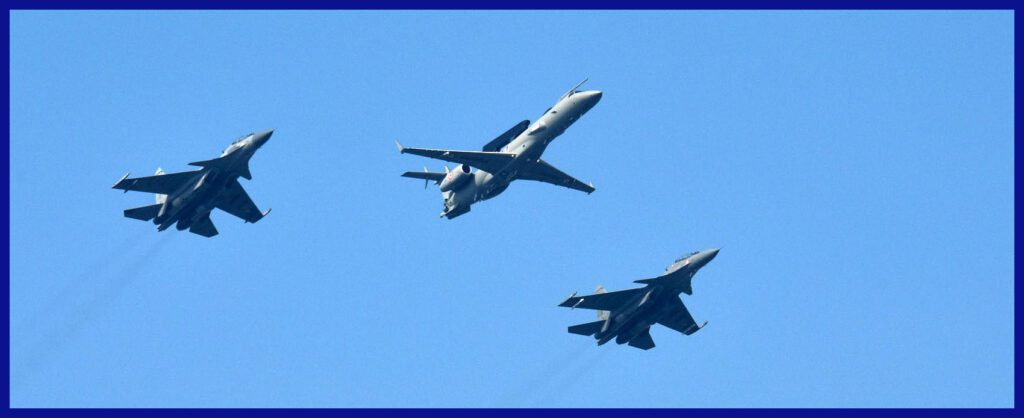
Technical Specifications Of Embraer 145I
- Crew: 8 – 10 ( two pilots, 1 navigator, and the mission crew )
- Length: 86 ft 5 in ( 26.34 m )
- Wingspan: 65 ft 9 in ( 20.4 m )
- Wing area: 550.9 sq ft ( 51.18 m2 )
- Height: 22 ft 2 in ( 6.76 m )
- Empty weight: 11,501 kg ( 25,355 lb )
- Max takeoff weight: 20,000 kg ( 44,092 lb )
- Fuel capacity: 4,499 kg ( 9,919 lb )
- Powerplant: 2 x ( Rolls-Royce A1E 3007 High bypass turbofan engine )
- Cruise speed: 833 km/h
- Operational Range: 1,852 km ( 1,000 NM )
- Service ceiling: 37,000 ft ( 11,278 m )

Furthermore, seize this exclusive opportunity to acquire the exquisite large-scale 1/72 premium die-cast models of the formidable MIG-29A Fulcrum. These remarkable and iconic air machines, which belong to the Indian Navy and Air Force, boast an impeccable track record and are now available for purchase on AirModels with worldwide delivery. Click here now to secure your piece before the limited stock is depleted.
In conclusion, the DRDO AEW&CS (Airborne Early Warning and Control System) stands as a cutting-edge and indispensable system that empowers the armed forces with vital surveillance and control capabilities. Equipped with advanced technologies, such as an active electronically scanned array radar, electronic warfare suite, and communication systems, this system efficiently detects and tracks aerial targets, providing real-time situational awareness and enhancing decision-making capabilities.
In the face of evolving security challenges worldwide, the significance of DRDO AEW&CS in safeguarding national security interests continues to grow. Its ability to operate in both friendly and hostile airspace and offer a comprehensive view of the battlefield renders it an invaluable asset to the armed forces.
Looking ahead, further advancements in technology and capabilities are expected for the DRDO AEW&CS. These enhancements will elevate its performance, reliability, and effectiveness in delivering critical surveillance and control capabilities to the armed forces. By persistently investing in the development and deployment of advanced defence technologies like the DRDO AEW&CS, we can foster a safer and more secure world for everyone, making it imperative for our government to expedite the acquisition of these technologies.

Important Announcement for Our Valued Readers!
After an article is published, it is possible that updates or changes may have occurred beyond the time of publication. Therefore, it is important to be aware that certain information in the article might be outdated. To ensure the most accurate analysis, it is highly recommended to verify the content with the latest sources available.
However, we are dedicated to delivering outstanding articles on military products and global updates. Maintaining quality and smooth operation requires resources. Your support sustains our efforts in providing insightful content. By purchasing high-quality products through our affiliated links, you help us keep our platform alive and acquire top-notch items. Your unwavering support is invaluable and inspires us to strive further.
We welcome your suggestions and requests for more information, as we value feedback from our readers. If there’s specific defence material or equipment not covered on our site, please share your request in the comments. We’ll strive to research and provide the required information. We sincerely thank you for your unwavering interest in our website, and we eagerly anticipate hearing from you! Enjoy your reading experience!
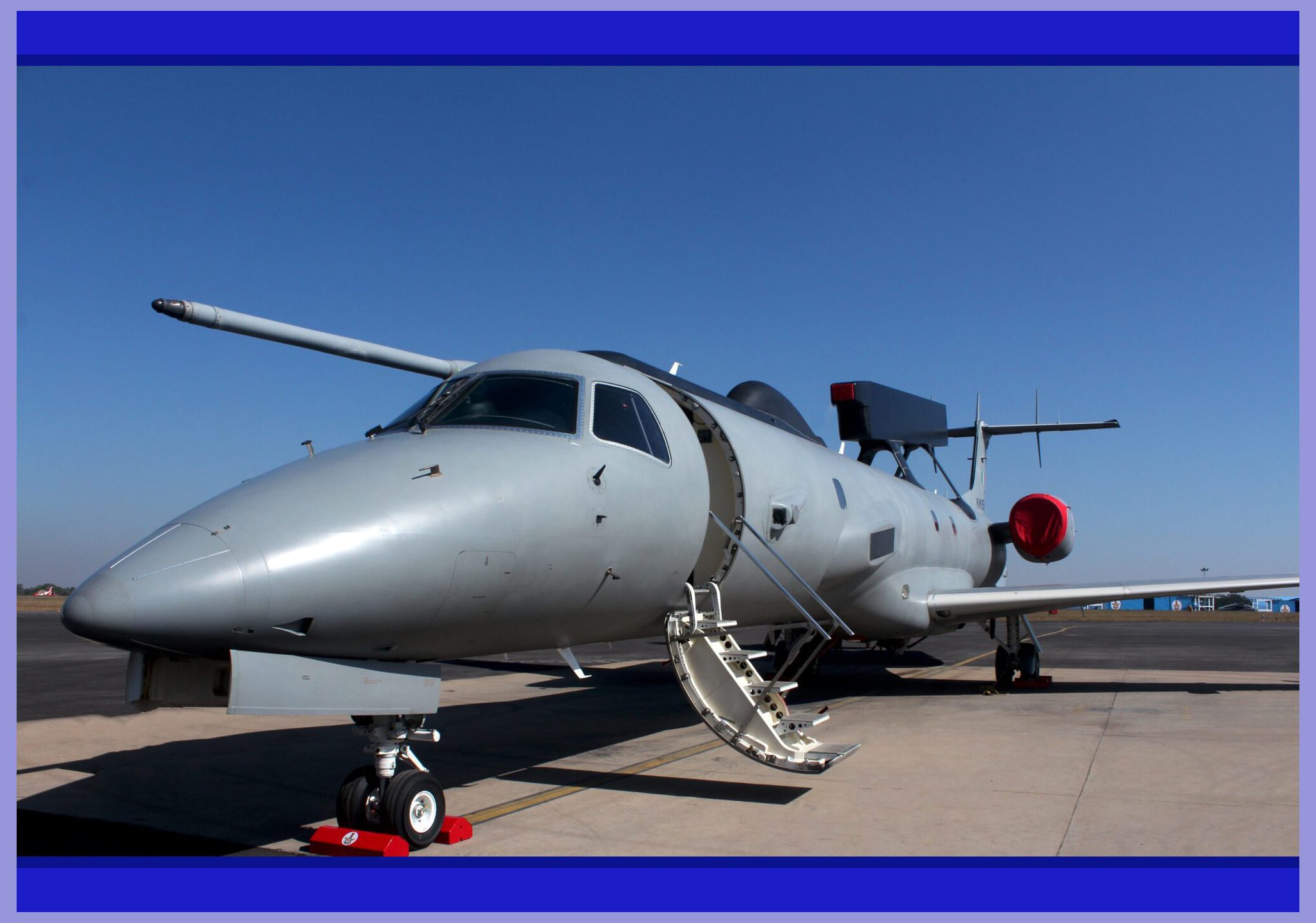
2 thoughts on “Embraer 145I Airborne Early Warning System For IAF”